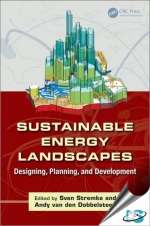Tab Article
In the near future the appearance and spatial organization of urban and rural landscapes will be strongly influenced by the generation of renewable energy. One of the critical tasks will be the re-integration of these sustainable energy landscapes into the existing environment—which people value and want to preserve—in a socially fair, environmentally sound, and economically feasible manner. Accordingly, Sustainable Energy Landscapes: Designing, Planning, and Development focuses on the municipal and regional scale, where energy-conscious interventions are effective, and stakeholders can participate actively in the transition process.
This book presents state-of-the-art knowledge in the exciting new field of sustainable energy landscapes. It bridges the gap between theory and fundamental research on the one hand, and practice and education on the other. The chapters—written by experts in their fields—present a selection of interdisciplinary, cutting-edge projects from across the world, illustrating the inspiring challenge of developing sustainable energy landscapes. They include unique case studies from Germany, Taiwan, the United Kingdom, Canada, Denmark, Austria, Italy, and the United States.
The editors and team of contributing authors aim to inspire readers, providing a comprehensive overview of sustainable energy landscapes, including principles, concepts, theories, and examples. The book describes various methods, such as energy potential mapping and heat mapping, multicriteria decision analysis, energy landscape visualization, and employing exergy and carbon models. It addresses how to quantify the impact of energy transition both on landscape quality and energy economy, issues of growing importance. The text infuses readers with enthusiasm to promote further research and action toward the important goal of building energy landscapes for a sustainable future.


